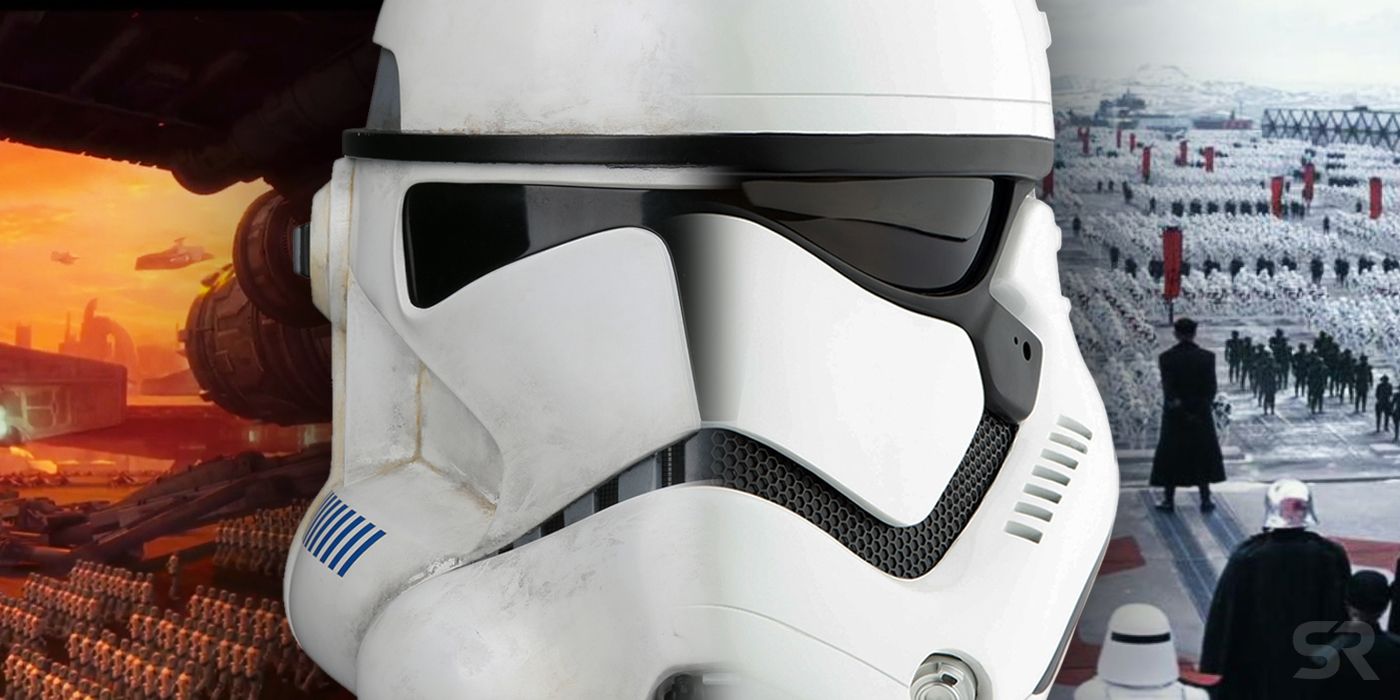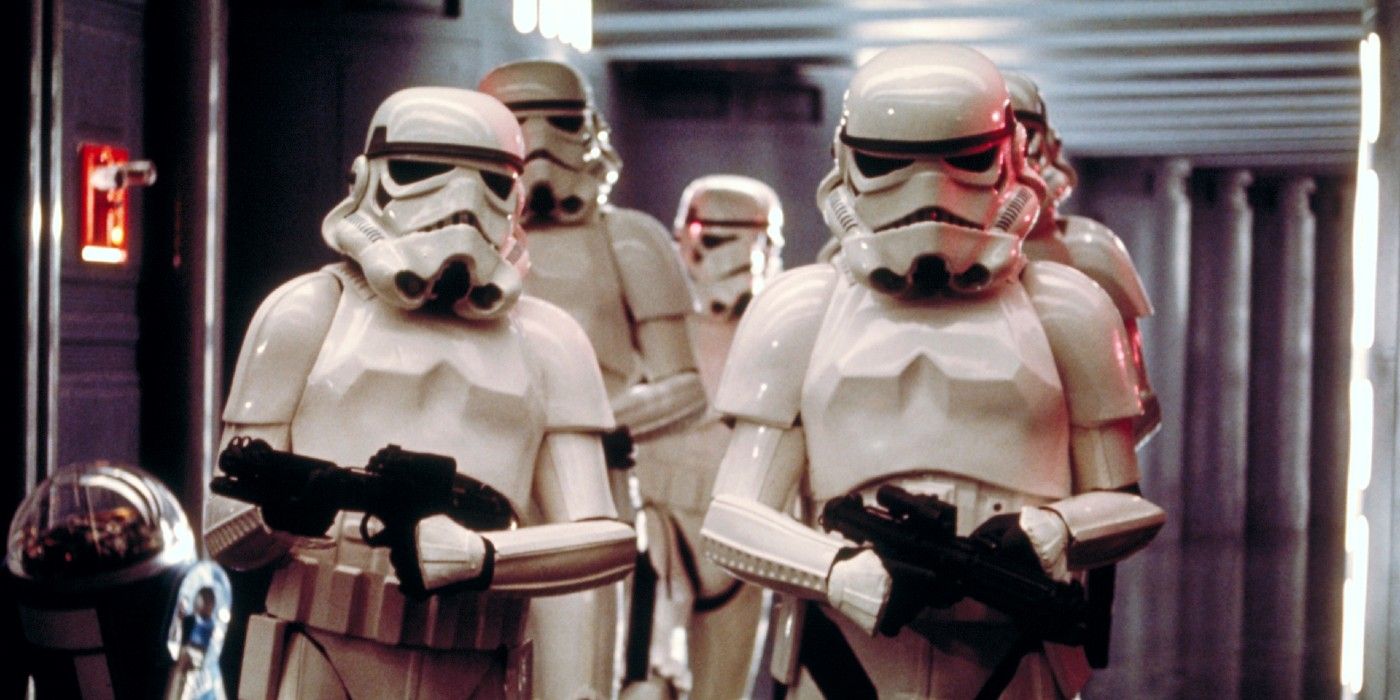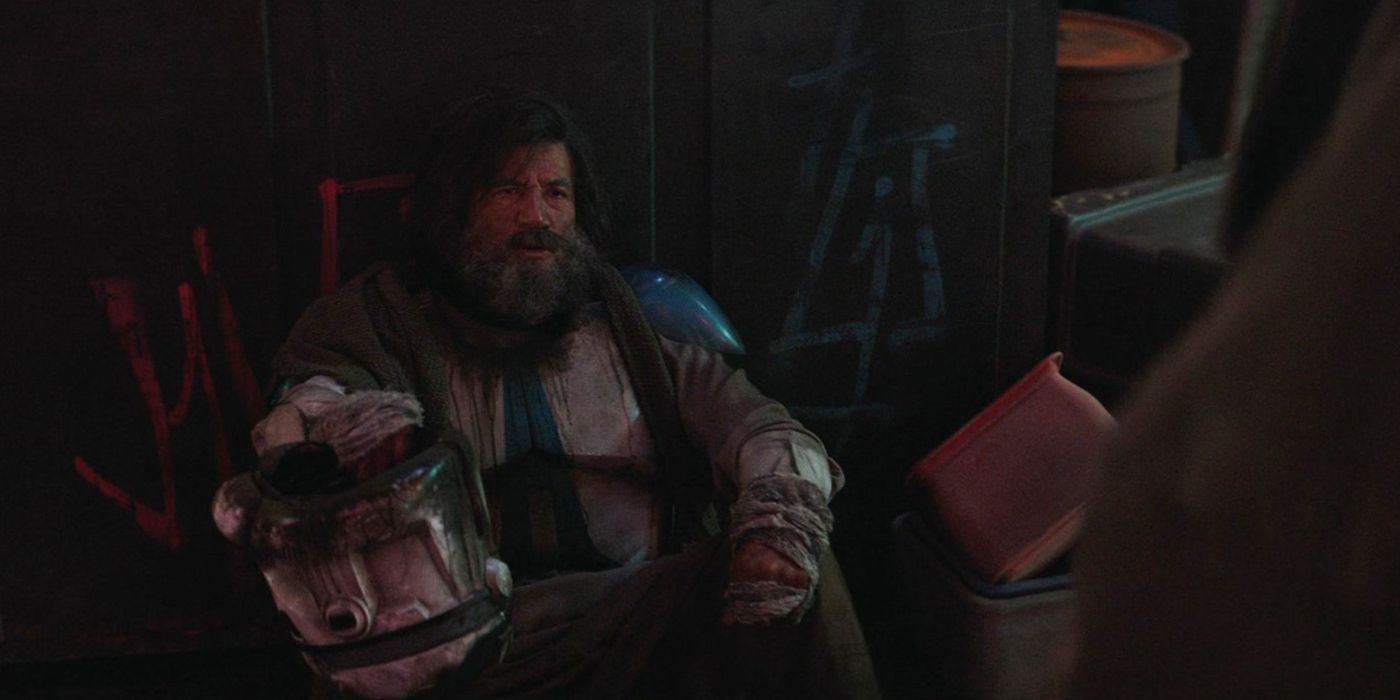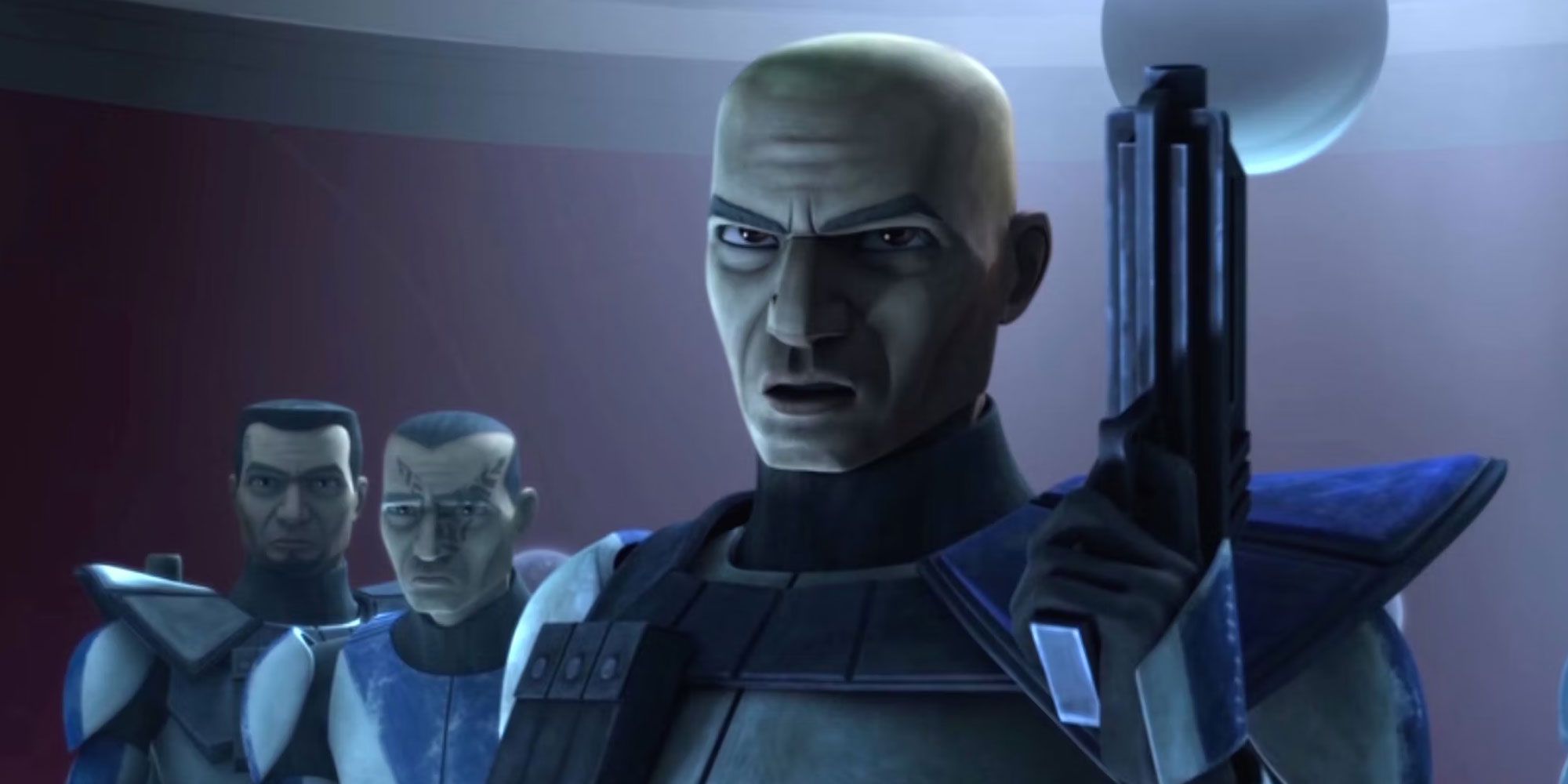At the end of the Star Wars prequels, the Empire had a full army of clone troopers, but the former Republic's clone army was eventually replaced with normal human Stormtroopers, and the impact of this change was explored in The Bad Batch, Obi-Wan Kenobi, and Andor. In the wake of the Empire’s formation and Order 66, Palpatine’s regime began its expansion of centralized power throughout the galaxy, tightening its iron grip on the systems of the Republic and setting up the Stormtroopers' Star Wars role. This process started during the events of The Bad Batch and continued up until the events of the original trilogy— the point in the Star Wars timeline by which the last remnants of galactic democracy had been more-or-less swept away, including the Jango Fett clones who comprised the Grand Army of the Republic. Though the clone troopers served Palpatine’s purposes perfectly during the Clone Wars, they became a liability in peacetime for a few reasons. As seen in Obi-Wan Kenobi with a homeless Republic veteran begging on the street, the post-war period and early days of the Empire didn't end well for the clone army.
In Star Wars, the exact timeline of the Empire’s phasing out of clone troopers is different in Legends than in the Canon, but the root motivations remain the same. In the Legends timeline, the Empire conducted various experiments with cloning after the end of the Clone Wars, including some projects meant to create Force-sensitive soldiers. Clones served as high-level shock troopers and remained a significant military asset for years after the Republic’s dissolution, though eventually even these crack units were replaced with ordinary recruits. The main motivation for the switch to Stormtroopers was financial — clones are expensive to produce. With Stormtroopers, the villainous Star Wars Empire didn't need to cover the exorbitant and time-consuming costs of ordering, growing, and training copies of Jango Fett. There was also a level of distrust of clones that rose up within the Empire, partially due to a series of clone uprisings. By 1 BBY (before the battle of Yavin), there were hardly any clones serving in the imperial military, and most who remained were in non-combat roles. Outside the imperial army, many clones rebelled — an event that may well be covered in Bad Batch season 2. Here's everything that happened to the clones in Star Wars after the Prequel Trilogy, and how it ties into why the Empire started using Stormtroopers instead.
Where Did The Clone Troopers Go In Star Wars?
When it comes to the process of phasing out clones and introducing Stormtroopers, Star Wars Canon and Legends tell pretty much the same story, albeit with a few differences. The Kamino cloning facilities were shut down in Canon shortly after the end of the war, leaving only one more generation of troopers to be grown/trained. As in Legends, the decision was based primarily on the high cost of cloning, which was no longer necessary without a large-scale conflict. The rest of the Grand Army of the Republic, due to their accelerated aging, began to be gradually replaced in the ranks within the first few years of Imperial rule. By around 5 BBY in the Canon timeline, before the beginning of Star Wars: Rebels, almost all active-duty Stormtroopers were ordinary recruits.
When The Bad Batch debuted on Disney+ Star Wars fans were shown an additional factor that influenced the Empire's decision – they were easier to control than clones. Despite being genetically identical, the clone soldiers of the Republic had remarkable amounts of free will and individuality. Many were conflicted about their part in Order 66 and the subsequent galaxy-wide purging of noncompliant planets and systems. Company 99, the titular "Bad Batch" of clones who refused to follow Palpatine's genocidal whims, lit a spark with their disobedience, leading to multiple clone revolts. These uprisings directly contributed to why the Empire created Stormtroopers. Ultimately, the clones were soldiers for the Republic and believed in its ideals — justice, freedom, and democracy. Despite their programming, they weren't as willing to be enforcers for a totalitarian Sith regime as Palpatine predicted. In contrast, Stormtroopers - Star Wars' conscripted fanatics - are devoted to following Palpatine's orders and even relinquish their names for TK numbers.
Another reason for the transition from lab-grown battle-ready Jango Fett copies to conscripted recruits is the extra level of control it afforded the Empire over different systems. Keeping an entire galaxy under military occupation is much easier when the lines between "us" and "them" are blurry in the eyes of would-be dissidents, and incentivized obedience is much more manageable. The ranks of Imperial officers and soldiers alike could be filled by individuals plucked from poverty and obscurity, ready to be molded into whatever Palpatine sees fit. By taking soldiers from all corners of the galaxy — pitching Imperial enlistment as the only way out of an Outer Rim life of poverty, as Luke Skywalker himself saw it — the Empire greatly reduced the risk of rebellion. A planet with children serving in the Imperial Navy would be far less likely to resist Palpatine’s regime than one with nothing to lose. Therefore, by replacing the faceless clone troopers with normal human Stormtroopers, Star Wars' Empire further tightened its grip on the galaxy. This is tackled further in Andor's Imperial Army Troopers, which is a separate military branch from the Stormtrooper Corps.
Obi-Wan Kenobi Shows That The Empire Abandoned Its Clone Troopers
When the Obi-Wan Kenobi limited series hit Disney+, it offered a glimpse into what life was like for the clones after the Empire switched to Stormtroopers. Clones didn't appear in the original trilogy, but that's mainly because Star Wars: Return of the Jedi was released in 1983, and clone troopers weren't introduced until Star Wars: Attack of the Clones hit theaters in 2002. The Clone Wars were mentioned in A New Hope by Obi-Wan, but that was the extent of their presence until the Prequel Trilogy. This was never really an issue. It's known The Empire phased out its clone army for conscripted Stormtroopers, and their lack of presence in the original trilogy could easily be explained in-universe by the clones meeting an ironically similar fate to the Jedi after Order 66. A genocidal liquidation of his clone army assets would certainly be on-brand for Palpatine, after all. However, because of Obi-Wan Kenobi, it's now known the clones weren't violently decommissioned — they were simply abandoned.
In an emotional moment, Obi-Wan comes across a disheveled veteran clone on Daiyu, a seedy planet visually reminiscent of the Coruscant streets from Star Wars: Attack of the Clones' first act. The eventual fate of most clones wasn't violent, it turned out, but tragic. They're reduced to begging on the streets, ignored even by the Stormtroopers who replaced them, leaving the sacrifices they made to build The Empire forgotten. The scene was the latest dark Star Wars moment to represent a serious real-world issue in the colorful, fictional galaxy. The clones have been tossed aside, discarded by an ungrateful Empire – just as veterans of real-world conflicts, such as Vietnam and WW2, were. Yet again, Disney has opted to show that while lightsabers, Jedi, and Sith, are fantastical, struggles faced by ordinary galactic citizens in the wake of the space-opera antics of Star Wars' extensive main character roster aren't dissimilar from the impacts of real-life tragedies.
When Did The Last Clones Die?
In Star Wars: The Bad Batch, it was revealed that the production of clones was halted almost as soon as Palpatine declared victory over the Jedi treason and founded the Galactic Empire. The clones were all thought to be long dead by The Force Awakens, but there are actually several clones still alive during the Original Trilogy. Apart from the unnamed Clone Wars veteran in Obi-Wan Kenobi and Clone Force 99, whose fate is still unknown, the longest-lived clone that's known of is Kix. Kix was put into cryogenic freezing because he figured out Order 66 would happen before it did. He was then unfrozen during the First Order War, the conflict during the Sequel Trilogy first seen in The Force Awakens, after which he sided with the Resistance. There's also Rex, an early member of the Rebel Alliance who rose to the rank of Rebel Commander. Rex's control chip was removed by Ahsoka Tano during Order 66. In the non-canon Legends continuity, several more clones survived to witness the events of the Original Trilogy. It's highly likely that the clones will never truly die off in Legends or Canon. Just like Stormtroopers, Star Wars' clones have a unique place in the franchise which can reveal new aspects of the Star Wars galaxy in ways inaccessible to stories about the Jedi or Sith.
Obi-Wan Kenobi is currently streaming on Disney+




